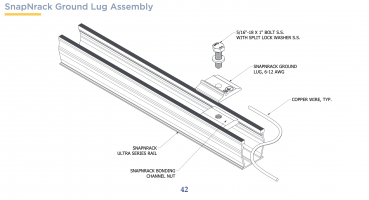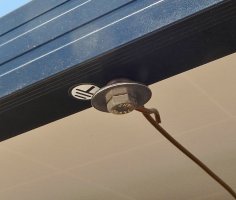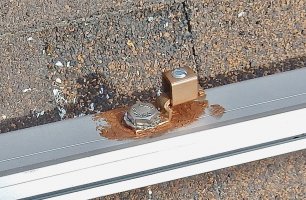Copper and aluminum can't be in contact. The aluminum will degrade and it doesn't take that long to happen. The racking companies are reluctant to include that information in the installation instructions. I know that because I was tasked with approving the installation instructions prior to approving the racking for use in LA County.
The racking companies include the information but bury it and then it is a recommendation. The best place to include a note to keep copper away from the aluminum would be with the picture.

But that would be too prominent so it is a few pages later in a group of notes.

I have never understood the phobia about mentioning copper in contact with aluminum. It happens often... like almost every time.


Both of the pictures are wrong installations for more reasons that just the dissimilar metals.
The racking companies include the information but bury it and then it is a recommendation. The best place to include a note to keep copper away from the aluminum would be with the picture.

But that would be too prominent so it is a few pages later in a group of notes.

I have never understood the phobia about mentioning copper in contact with aluminum. It happens often... like almost every time.


Both of the pictures are wrong installations for more reasons that just the dissimilar metals.
